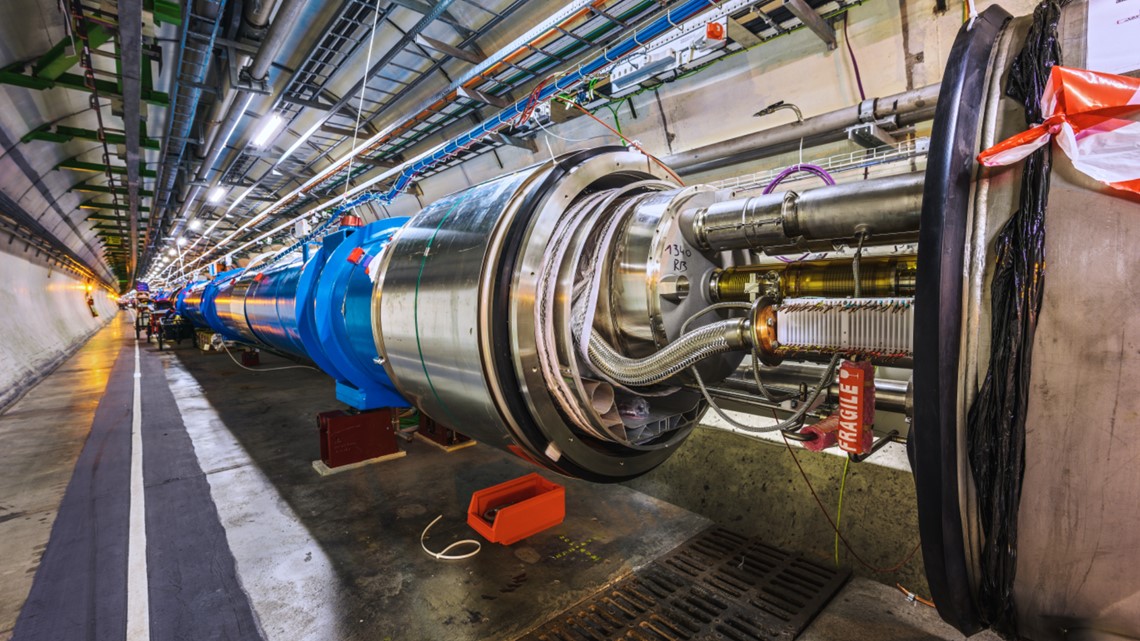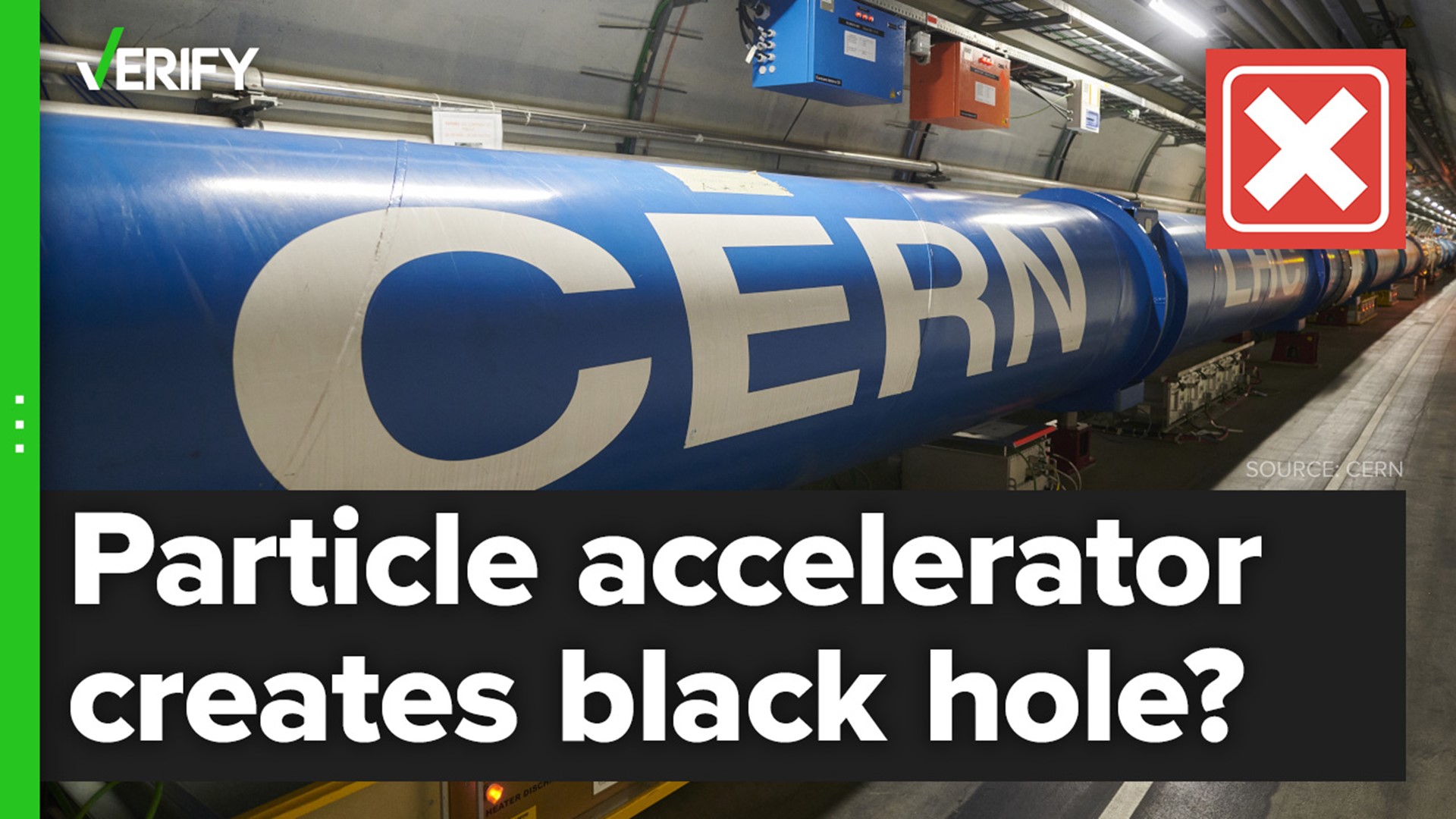On July 5, 2022, the European Organization for Nuclear Research, known as CERN, restarted its machine known as a particle accelerator. The machine was restarted today after a three-year upgrade and maintenance hiatus, and will run for the next four years. The news prompted conspiracy theories to spread online, with people speculating what might happen after the machine was turned on.
Some people said turning the accelerator on would cause the Mandela effect, or the creation of false memories. Others said it could open a portal to another dimension or a black hole.
VERIFY audience member Wilson emailed to ask if CERN could open a black hole, which is an object in space so dense that light cannot escape it.
THE QUESTION
Can CERN’s particle accelerator open a cosmic black hole?
THE SOURCES
- CERN
- The U.S. Department of Energy
- NASA
- Dejan Stojkovic, PhD, a physics professor with the University of Buffalo
THE ANSWER
No, CERN’s particle accelerator can’t create a cosmic black hole. The machine also won’t cause a shift in time or space. The machine is being used by researchers to analyze how particles work in the universe.
WHAT WE FOUND
According to the U.S. Department of Energy, a particle accelerator is a machine that speeds up the smallest known particles, such as electrons or protons, to very high energies.
CERN, located in Switzerland, is the world’s largest physics laboratory, and CERN’s Large Hadron Collider (LHC) is one of the largest particle accelerators in the world. Inside the accelerator, two high-energy particle beams travel close to the speed of light before they are forced to collide. The beams collide in four different locations, where particle detectors are located.


CERN says the process shows scientists how the particles interact, and “provides insights into the fundamental laws of nature.” The U.S. Department of Energy has information on how particle accelerators work, and how the technology has influenced the fields of basic science, medicine, consumer products and national security.
On July 5, three never-before-seen particles were identified by scientists. And contrary to viral theories, a portal to a new dimension wasn’t discovered, nor was a black hole opened. According to NASA, a cosmic black hole's gravity is so powerful that it will be able to pull in nearby material and "eat" it.
“For black holes, distant observers will only see regions outside the event horizon, but individual observers falling into the black hole would experience quite another ‘reality.’ If you got into the event horizon, your perception of space and time would entirely change. At the same time, the immense gravity of the black hole would compress you horizontally and stretch you vertically like a noodle, which is why scientists call this phenomenon (no joke) ‘spaghettification,’” NASA says.
There is no evidence any of that happened on July 5 after the LHC was restarted.
Dejan Stojkovic, a physics professor with the University of Buffalo, told VERIFY in an email that current technologies aren’t capable of creating a cosmic black hole. Black holes form in space when certain stars, much larger than the sun, collapse on themselves at the end of their lives.
“To create a black hole with our current technology, in the context of our standard theories of gravity … We need an accelerator as big as the whole universe. So we should either improve our technology drastically, or we should build a bigger accelerator,” Stojkovic said.
Some theories suggest the particle accelerator could form “quantum” black holes, but those would be microscopic, CERN’s website says.
A quantum black hole is different from a cosmic black hole. Instead of being created by the collapse of stars, quantum black holes could be created when protons collide.
“[Black holes] concentrate a very large amount of matter in a very small space. They are so dense that the gravity they exert is such that not even light can travel out of them,” CERN says. “Speculations about black holes at the LHC refer to particles produced in the collisions of pairs of protons. These are microscopic - or quantum - black holes. Scientists are not at all sure that quantum black holes exist.”
If the LHC were to create a black hole, it could confirm theories that the universe is capable of hosting other dimensions, CERN says. VERIFY asked CERN about the conspiracy theories surrounding their July 5 event. In an email, CERN said the theories are false and they hope people will instead focus on actual scientific research.
“CERN’s research captures the imagination of lots of people, which is why CERN has been featured in a lot of science fiction books / even movies, around the world. These imaginative works, inspired by our scientific research, are works of fiction generated to capture the reader or viewer's sense of wonder and should not be confused with the actual scientific research,” CERN told VERIFY.

